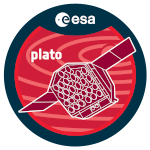Grid-based modelling techniques have been shown to enable the determination of stellar properties with a significant accuracy, justifying their use in the context of data exploitation from space missions like Kepler, TESS or PLATO as a way to better constrain stellar evolution models.
In this context, the subgiant phase is both particularly interesting and challenging. Indeed, changes to the stellar structure allow the emergence of mixed modes, whose frequencies are characterized by a fast evolution with age, which can potentially allow the determination of stellar properties with great precision. However, current modelling techniques consider stellar grids that lack the necessary resolution to properly account for the fast mode frequency evolution, and require an interpolation algorithm to cover the parameter space in between the grid models when applying model-data comparison methods. The errors resulting from the interpolation of non-radial modes across different masses in a typical grid of subgiant models can be as high as a few tens of muHz (this is up to 2 orders of magnitude higher than the observational errors in some stars).
In this presentation, we characterize the problem of frequency interpolation in the subgiant phase, and explore several possibilities to improve on the current procedures. We discuss the advantages of considering central density as the age proxy of interpolation over age, and cubic polynomial interpolation over linear, while interpolating along and across evolutionary tracks with different masses, quantifying the errors obtained with the different algorithms. We also discuss possible improvements resulting from the application of a variable transformation to the system, proposing a new age proxy for interpolation.

 PDF version
PDF version
